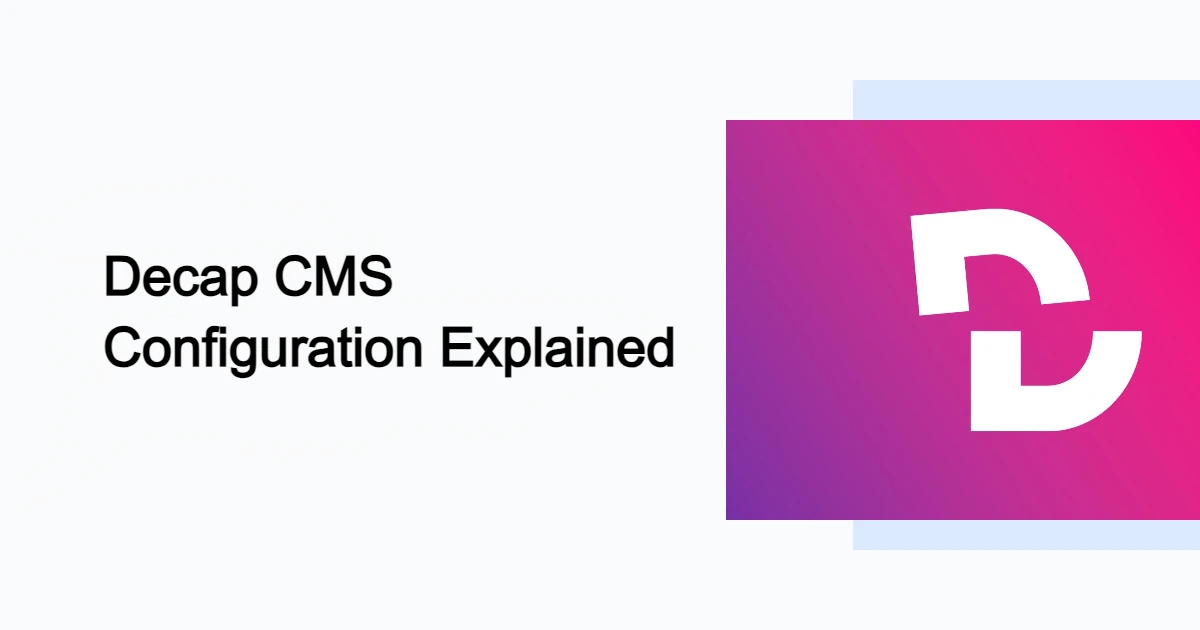Decap CMS Configuration Mastery: Dive Deep into config.yml for Website Perfection

Overview
In the ever-evolving landscape of web development, having a robust content management system (CMS) is crucial for efficient website maintenance. Decap CMS stands out as a powerful choice, offering a user-friendly interface. To truly harness its potential, understanding and mastering the config.yml file is key.
Unveiling the config.yml File
The config.yml file serves as the backbone of Decap CMS, shaping the behavior of the CMS and dictating how content is managed. Let's delve into the essential components and options that can transform your website management experience.
Content Collections: A Foundation for Organization
One of the fundamental aspects of config.yml is the definition of content collections. These collections determine the types of content your site will contain, such as blog posts, articles, or projects. Each collection specifies the fields associated with the content, allowing you to tailor the editing experience to your specific needs.
1collections:
2 - name: 'blog'
3 label: 'Blog'
4 folder: 'content/blog'
5 create: true
6 fields:
7 - { name: 'title', label: 'Title' }
8 - { name: 'date', label: 'Date', widget: 'datetime' }
9 - { name: 'body', label: 'Body', widget: 'markdown' }
Widgets: Enhancing Editing Flexibility
Widgets define the editing interface for each field within a collection. Decap CMS provides various widgets, from simple text inputs to more complex options like date pickers and markdown editors. Understanding and selecting the right widgets can significantly enhance the content creation experience for your team.
Note: You can check all available widgets in Decap CMS official docomentetion here
1fields:
2 - { name: 'title', label: 'Title', widget: 'string' }
3 - { name: 'date', label: 'Date', widget: 'datetime' }
4 - { name: 'body', label: 'Body', widget: 'markdown' }
Backend Configuration: Seamless Integration with Decap CMS
The config.yml file also allows you to specify the backend configuration, ensuring a smooth connection between Decap CMS and the hosting platform. You can define the repository, branch, and other settings, ensuring that your content updates seamlessly integrate into your live site.
1backend:
2 name: 'git-gateway'
3 branch: 'main'
4 repo: 'your-username/your-repo'
Customization: Tailoring Decap CMS to Your Needs
Beyond the basics, Decap CMS offers extensive customization options through the config.yml file. You can define custom previews, set up editorial workflows, and even integrate third-party services, adapting the CMS to suit the unique requirements of your project.
1media_folder: 'static/assets/uploads'
2public_folder: '/assets/uploads'
Conclusion: Mastering Decap CMS for Website Excellence
By unlocking the potential of the config.yml file, you empower yourself to tailor Decap CMS to meet the specific demands of your website. Whether you're managing a blog, portfolio, or business site, understanding and leveraging the options within config.yml is the key to achieving website perfection with Decap CMS. Take the dive into configuration mastery, and elevate your content management experience to new heights.

